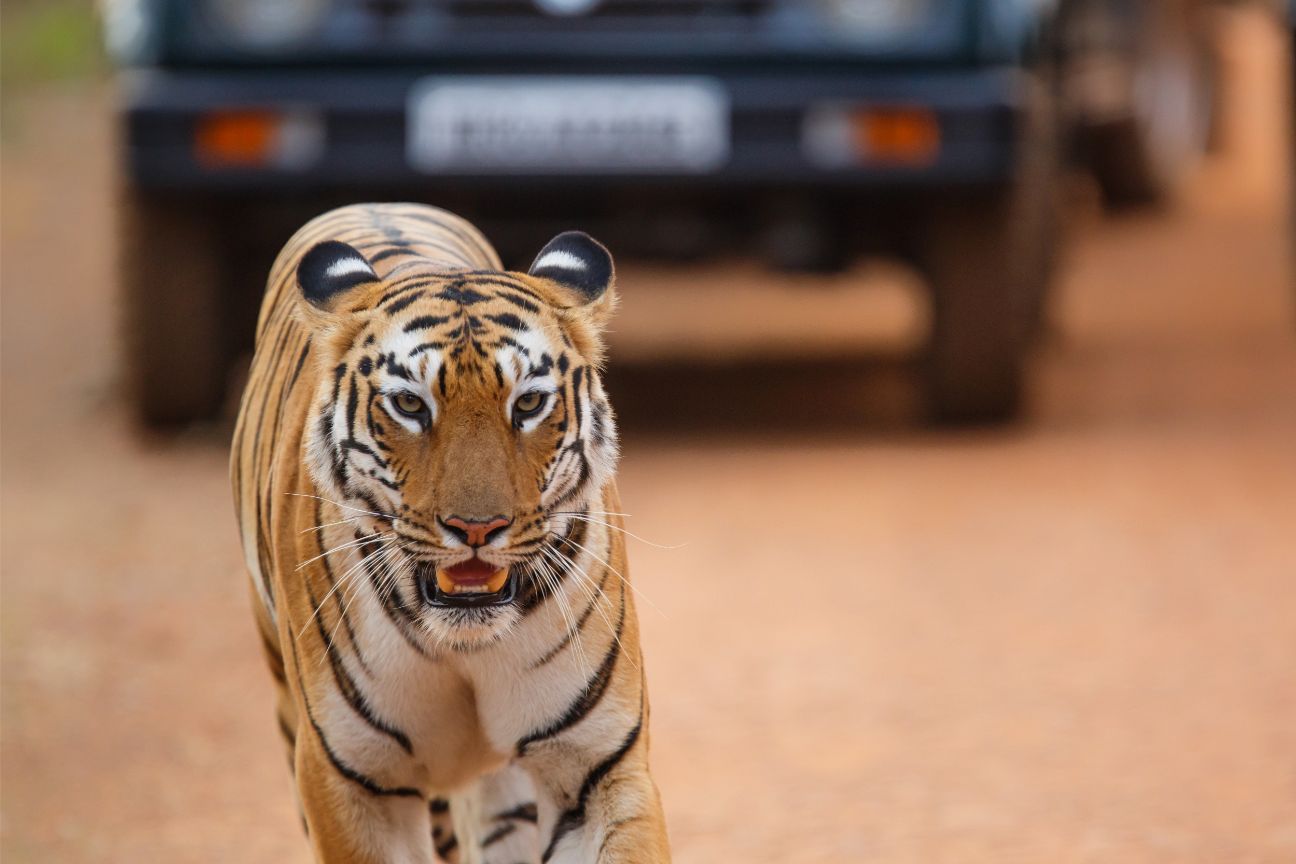A few simple rules can help you make the most of your holiday and have a minimal impact on the places you visit. Here’s how you can be a more responsible tourist!
“Whenever you go on a trip to visit foreign lands or distant places, remember that they are all someone’s home and backyard.”
– Vera Nazarian
In the case of the intrepid wildlife tourist, those backyards may be home to hundreds or even thousands of different species of life.
The United Nations World Tourism Organisation (UNWTO) declares that “biodiversity is one of tourism’s greatest assets”, providing a key source of income for local populations which in turn helps conservation efforts. And wildlife tourism is on the rise! Research by Conservation India shows that wildlife tourism in India is growing with domestic tourists, making up a large proportion of visitors to national parks.
A 2014 survey of tourists in India found the motivation to visit national parks and other areas of scenic beauty are varied – from wanting to see a tiger and enjoying natural beauty to being able to spend time with family and friends and being able to brag about a holiday. While an increased interest in nature may be a cause to be celebrated, how such tourism can benefit local communities and aid conservation without putting a strain on finite resources is a complex issue that many organisations are looking to address.

Significant disturbance to animals in their natural habitats is one of the most overlooked factors of wildlife tourism
What This Means for the Eco-Conscious Tourist
Organising tourism that prevents the exploitation of local resources, provides sustainable livelihoods to people and promotes conservation without taking away from a great tourist experience is a big ask and has given rise to several terms like ‘ecotourism’, ‘sustainable tourism’ and ‘green tourism’. This can get terribly confusing for the eco-conscious tourist.
Without delving into the nitty-gritties of the different jargon and the minutiae behind their similarities and differences, here are a few things that you can do to be a responsible tourist.
1. Do Your Research
Read up about where you are going, the local culture, and what you can expect to see and do. If you are visiting a wildlife sanctuary, find out what their timings are. It’ll help you avoid any disappointments. Watch a documentary about the area if you can or read a guidebook. Try to learn a few simple words from the local language. It may help you communicate with your local guides better and people will appreciate the effort.
Unfortunately, there are plenty of associations who take advantage of tourists with big hearts. If you are travelling as a ‘voluntarist’, make sure the company offering the program is actually working toward the benefit of the local communities and areas.
2. Don’t Add to the Plastic Problem
Plastic waste is a big issue in many national parks, so be careful about what you use. Carry your own water bottle with you. It’ll help you cut down on plastic consumption. Most hotels are happy to refill your bottles for you. Also, make sure you have a ‘day bag’ where you can carry any snacks with you and bring the packaging back to dispose of properly at your hotel.
3. Be Mindful of What You Purchase or Take Home With You
It’s perfectly natural to want a souvenir. Try to purchase local handicrafts or products. It helps contribute to the local economy. Be careful though – you may find products made using endangered animals or flora. If you’re in doubt about a particular artefact, it might be better not to buy it.
As tempting as it may be to pick up a pretty feather or a shed antler and take it home with you – don’t! Not only can it be illegal, but it’s unethical too.
4. Remember, It’s Not a Zoo
Seeing a big cat or an elephant is an experience to be treasured, but don’t be disappointed if you don’t see one. Speak to your guides and show an interest in all things big and small. You’ll be amazed at how much more there is to marvel at!
5. Respect the Rules
There are set routes for tourists in most national parks and wildlife sanctuaries. These routes are mapped for both your safety and that of the animals. Respect those rules. It’s not your safari driver’s fault that you aren’t allowed on them.
Keep your voices low in order to avoid bothering the wildlife and other tourists. You’ll appreciate your surroundings more when they are quiet too.
6. Use Resources Carefully
Not every area offers eco-friendly or sustainable accommodation, so be careful of how much you consume. Water can be scarce in many regions, so avoid long showers (no matter how tempting they can be after a long dusty day), reuse your towels, and turn off the lights and air conditioning when you aren’t using them.
A few simple rules can help you make the most of your holiday and have a minimal impact on the places you visit. To use an old cliché, ‘take home memories and leave nothing behind but footprints’.
Sources:
Karanth K.K., DeFries R., Srivathsa A., Sankaraman V., Wildlife tourists in India's emerging economy: potential for a conservation constituency?, Oryx. 2012 Jul;46(3):382-90.
Mody, M., Day, J., Sydnor, S., Jaffe, W., & Lehto, X., The different shades of responsibility: Examining domestic and international travelers' motivations for responsible tourism in India, Tourism Management Perspectives, 2014, 12, 113-124 - [ View ]
Tips for a Responsible Traveller, World Committee on Tourism Ethics, United Nations World Tourism Organization, 2017 [ View ]
Tourism and Biodiversity, United Nations World Tourism Organization, 2011 [ View ]
Twining-Ward, Louise; Li, Wendy; Bhammar, Hasita; Wright, Elisson. 2018. Supporting Sustainable Livelihoods through Wildlife Tourism. Tourism for Development;. World Bank, Washington, DC. © World Bank. License: CC BY 3.0 IGO [ View ]